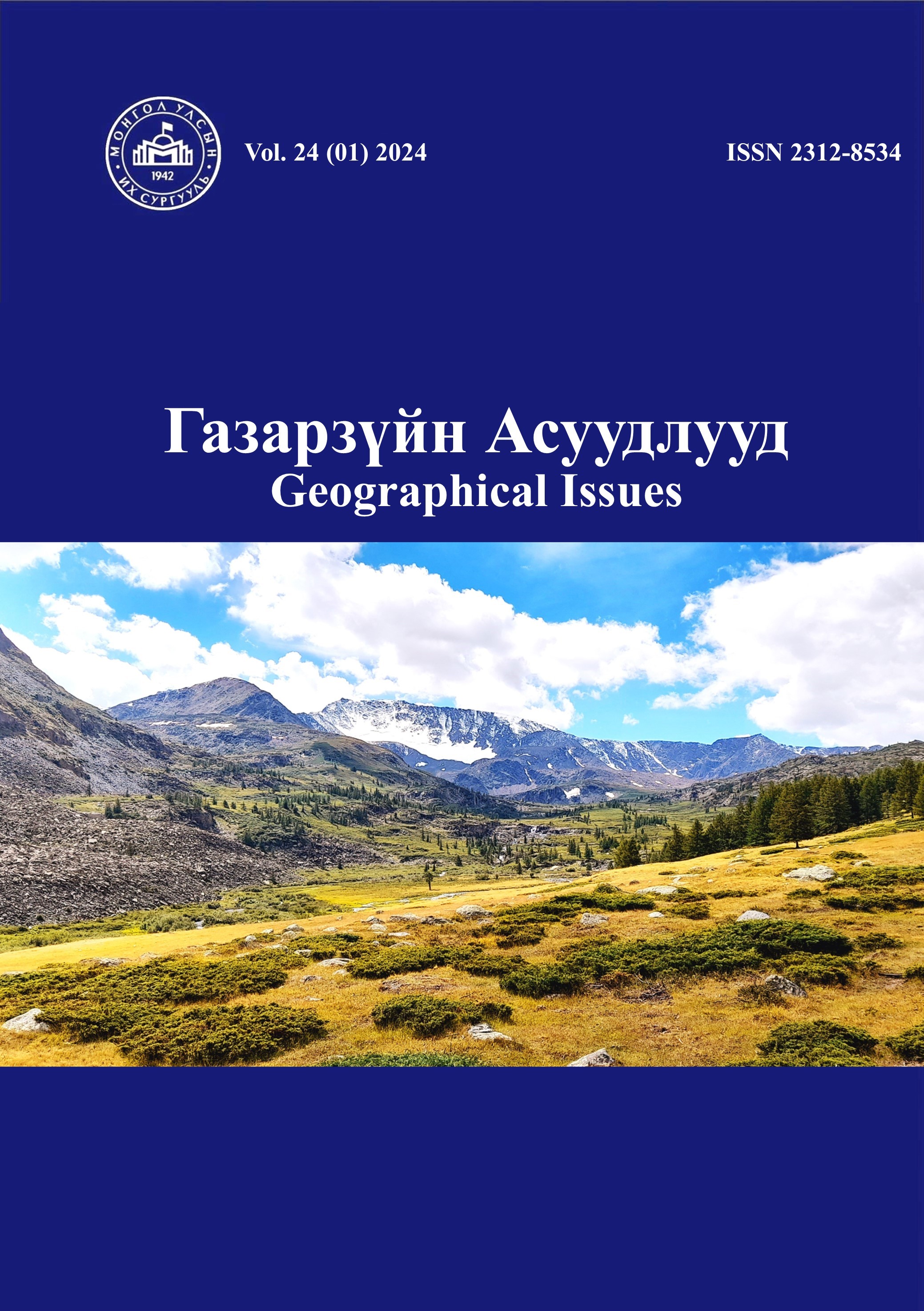The influence of socio-economic factors on net primary products of Mongolia during 2000-2021
Монгол орны ургамлын цэвэр анхдагч бүтээгдэхүүнд нийгэм эдийн засгийн хүчин зүйлсийн нөлөө (2000-2021)
Keywords:
NPP, Socio-economic factors, Number of livestock, Population, Gross Domestic ProductAbstract
The Net Primary Productivity (NPP) of vegetation is a crucial metric for understanding plant dynamics and carbon sequestration capacity in a specific region. According to the Coupled Human and Natural Systems (CHANS) framework posits that human societies and natural ecosystems operate as cohesive subsystems intricately linked across spatial and temporal scales. This research aims to elucidate the dynamics of the CHANS in Mongolia by utilizing widely available indicators encompassing social, economic, and ecological dimensions, including NPP, Gross Domestic Product (GDP), population, livestock count, and their respective ratios. In this study, the ecosystem Carnegie-Ames-Stanford Approach (CASA) modelwas used to compute NPP from 2000 to 2021. The Mann-Kendall trend test and variance stability analysis were conducted to examine the spatiotemporal variability of NPPand its interplay with societal dynamics. Additionally, partial correlation analysis was performed to elucidate the association between economic factors across spatial and temporal series. Over the 22-year study period, Mongolia experienced increases in NPP, population, livestock count, and GDP (0.77 g C m-2 yr-1, 49,416 people/year, 2.0 million heads/year, and 2 trillion/year, respectively). Our investigation highlights the spatial influences impacting NPP, particularly the positive correlation between NPP and livestock count during periods of NPP escalation, which stimulates GDP growth. Interestingly, there is no discernible correlation between population expansion and either livestock count or GDP. Spatially, NPP exhibits a modest positive correlation with GDP (R=0.3, R=0.15) and a negative correlation (R=0.04) with livestock count. Recent years have witnessed a rise in NPP, precipitation and livestock numbers, despite considerable rural migration. Looking ahead, increasing carbon absorption and accumulation is crucial for enhancing agricultural productivity and fostering socioeconomic development. Therefore, a detailed exploration of these dynamics holds significance for pastoral Mongolia.
Downloads
Downloads
Published
How to Cite
Issue
Section
License

This work is licensed under a Creative Commons Attribution-NonCommercial-ShareAlike 4.0 International License.






